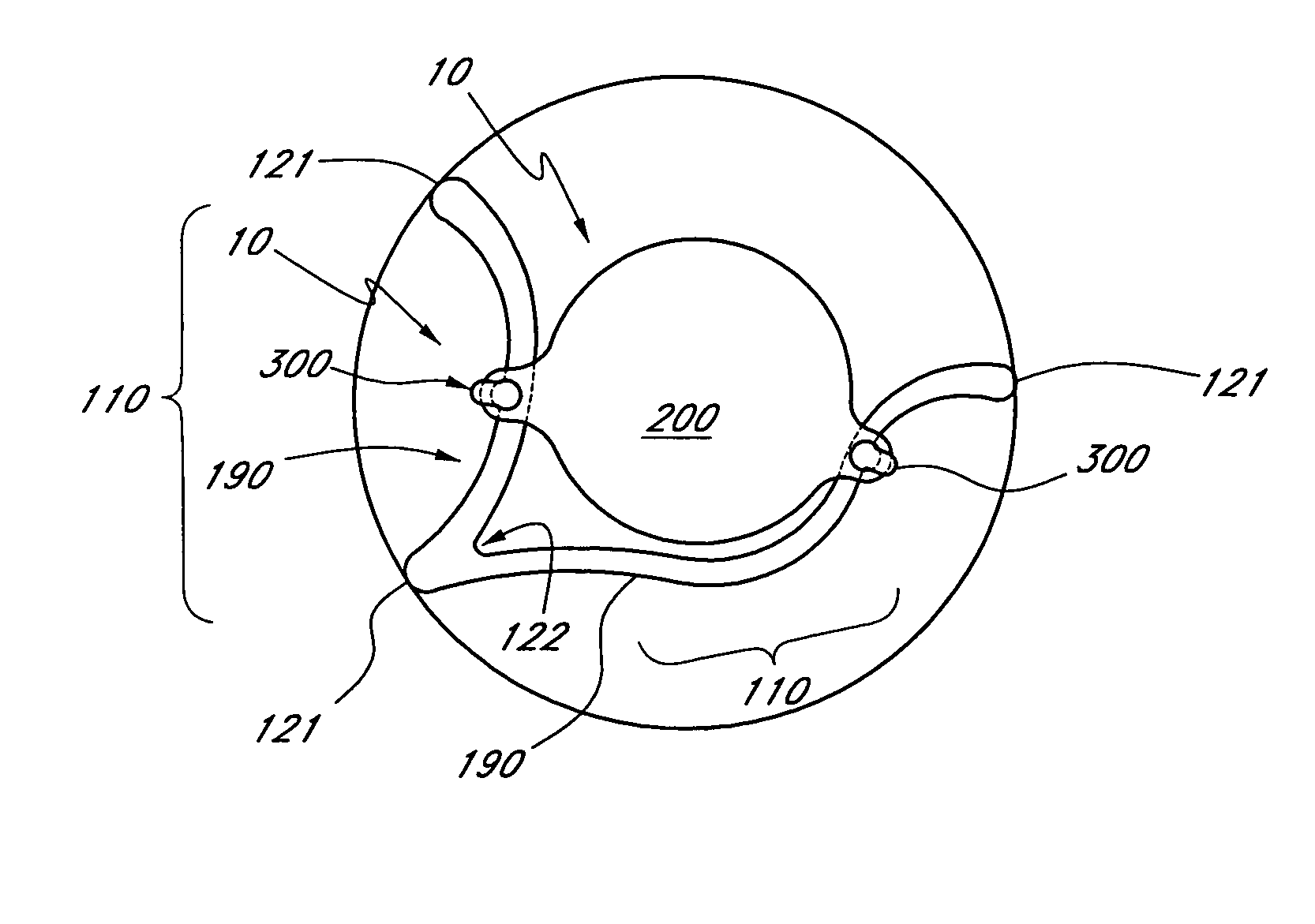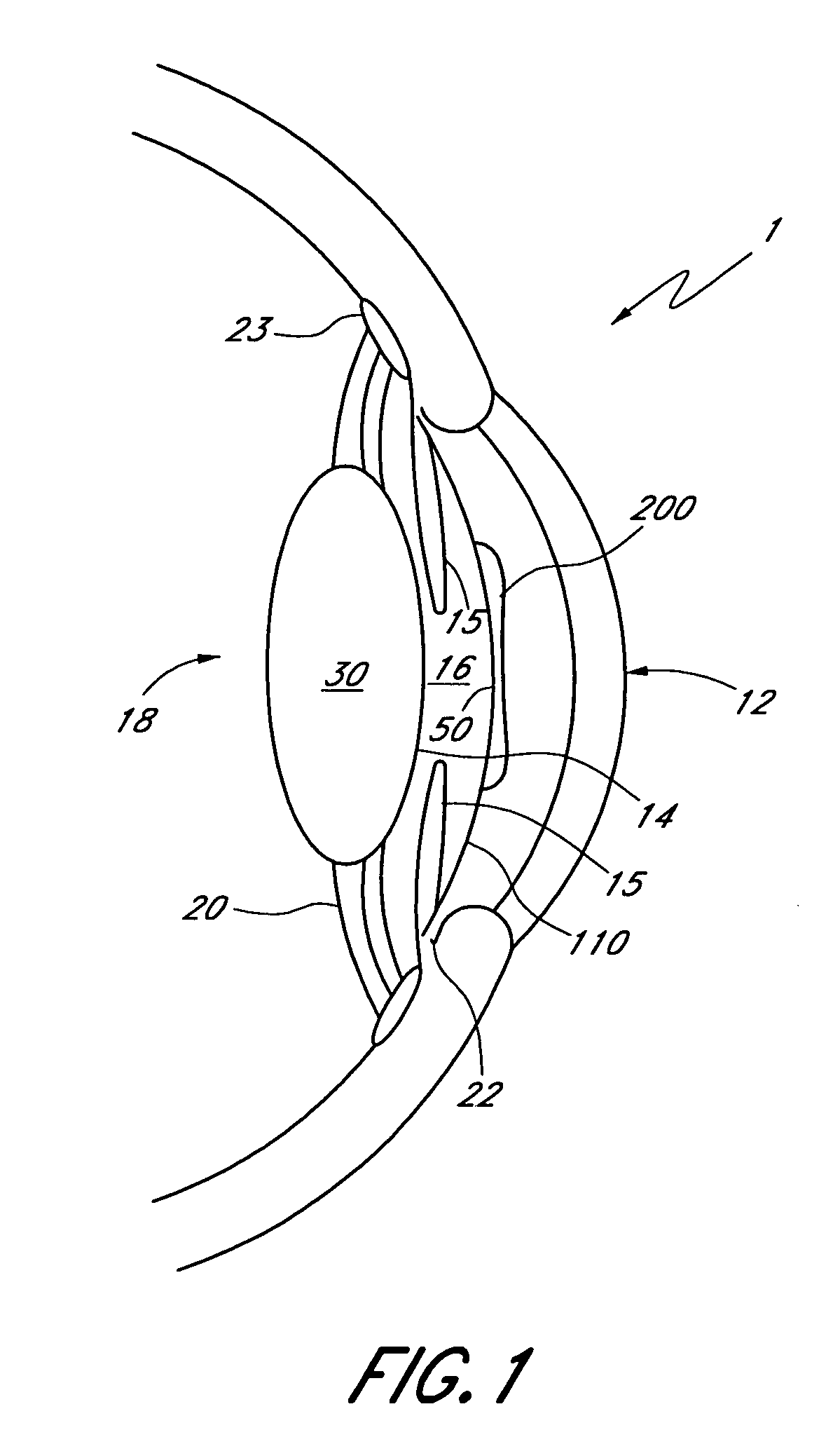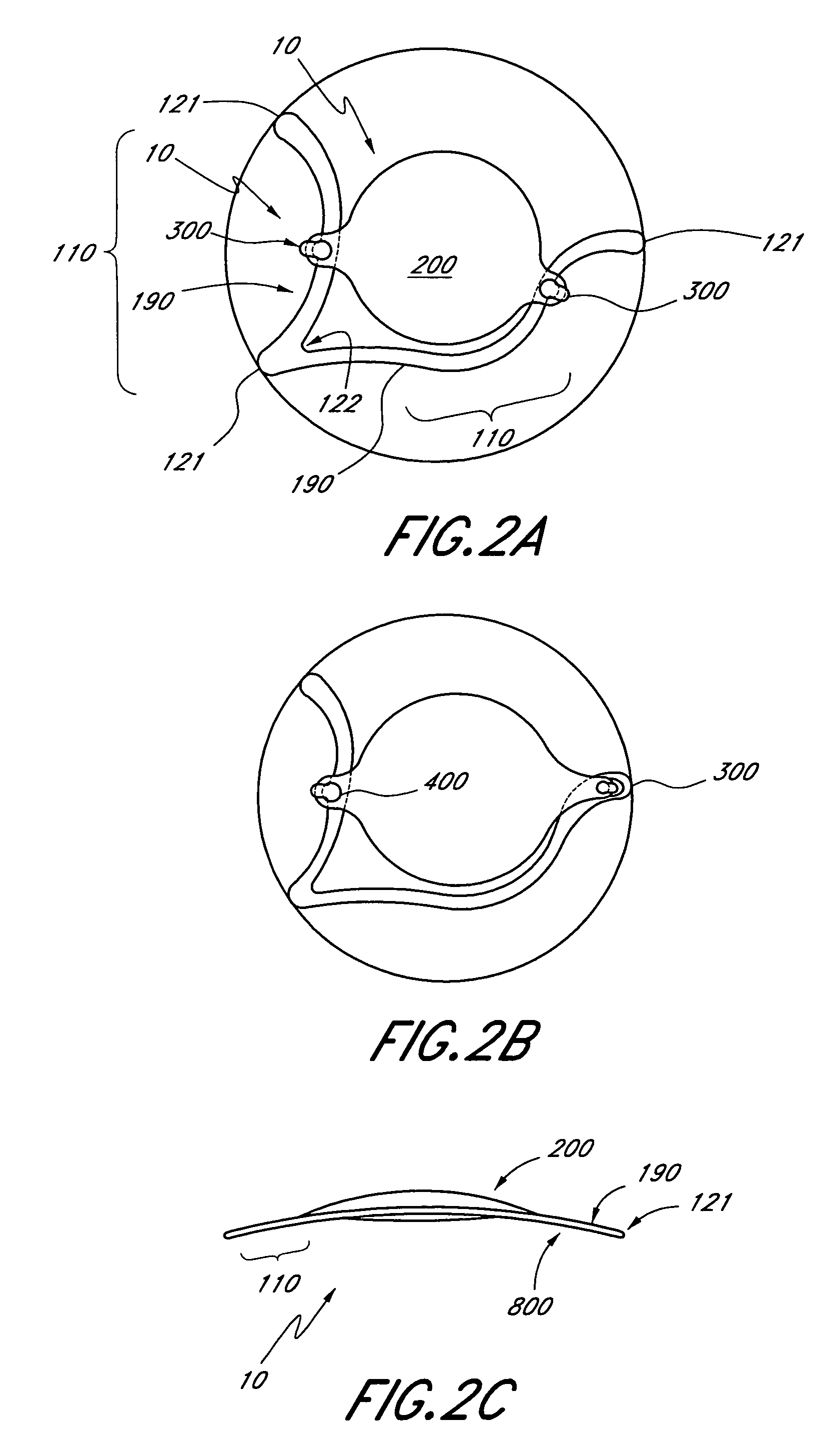Two part "L"-shaped phakic IOL
a phakic iol and film frame technology, applied in the field of iol film frame, can solve the problems of difficult placement of the anterior chamber of the lens, early lenses experienced marked endothelial loss, and the lens was too heavy and too large, so as to reduce the pressure against the angle
- Summary
- Abstract
- Description
- Claims
- Application Information
AI Technical Summary
Benefits of technology
Problems solved by technology
Method used
Image
Examples
example 1
Insertion of the Two Part IOL into the Eye
[0055]A 2 mm incision is made near the limbus of the eye. Buffers are injected into the anterior chamber. The frame is inserted as shown in FIGS. 5A-H by a rotation action. The surgeon grasps the folded optic with the outside (distal) eyelet leading forward. The surgeon then pushes the lens through the incision and hooks the distal eyelet onto the distal cleat of the frame. Then, the surgeon slowly opens the forceps while maintaining slight tension. The lens is then grasped near or onto the closest eyelet (proximal) and pulls it over the closer cleat of the frame.
[0056]Therefore, the IOL of the present invention presents a number of advantages. It is inserted in two separate pieces significantly reducing the bulk so that the incision can be as narrow as 1 mm. It is lightweight and thin which reduces corneal chafing and pupilary block. In addition, because of the hinges and toes and arcuate shape, it is capable of being inserted and resting o...
PUM
 Login to View More
Login to View More Abstract
Description
Claims
Application Information
 Login to View More
Login to View More - R&D
- Intellectual Property
- Life Sciences
- Materials
- Tech Scout
- Unparalleled Data Quality
- Higher Quality Content
- 60% Fewer Hallucinations
Browse by: Latest US Patents, China's latest patents, Technical Efficacy Thesaurus, Application Domain, Technology Topic, Popular Technical Reports.
© 2025 PatSnap. All rights reserved.Legal|Privacy policy|Modern Slavery Act Transparency Statement|Sitemap|About US| Contact US: help@patsnap.com



